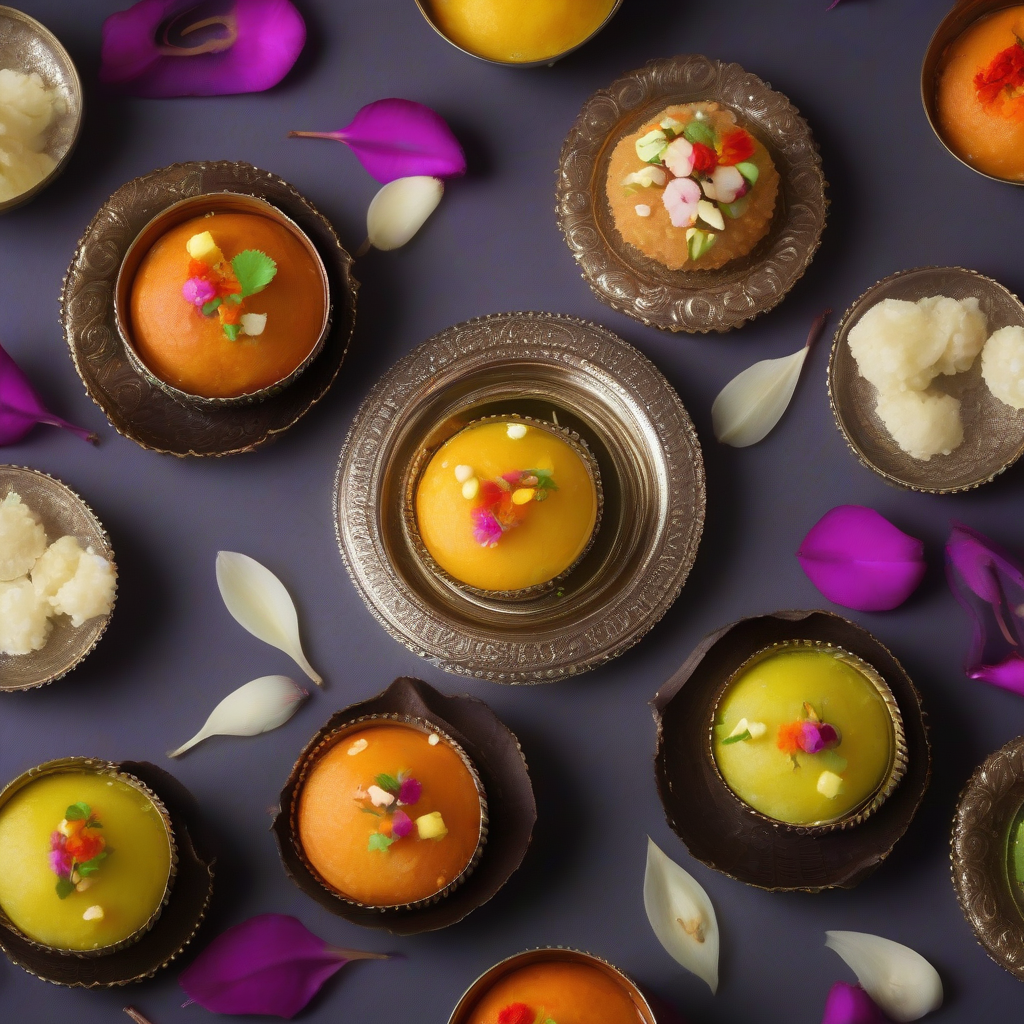Meetha Magic: Let’s Make Some Pahadi Bal Mithai, Yaar!
Namaste doston! Kem cho? Assalamualaikum! Sat Sri Akal! Chef Curry Do’pyaza here, back in your kitchens and hearts with another delectable treat. Today, we’re journeying to the cool, crisp mountains of Kumaon, Uttarakhand, for a taste of something truly special: Bal Mithai!
This fudgy, chocolate-hued sweet, studded with sugar balls, is more than just a dessert. It’s a taste of home, a memory of festive cheer, and a symbol of the warm hospitality of the Pahadi people.
You’ll often find Bal Mithai gracing sweet shops during Diwali, Dussehra, and especially during weddings and other auspicious occasions in Uttarakhand. It’s the sweet you offer guests with pride, the sweet you take back home as a souvenir, and the sweet that instantly transports you to the misty hills.
A Sweet Story: Bal Mithai’s Humble Beginnings
The story of Bal Mithai is as intriguing as its flavour. Legend has it that it was first created by a confectioner named Joga Singh in Almora, over a century ago. While the exact details are shrouded in sweet mystery, one thing is certain: Bal Mithai has since become an iconic sweet, synonymous with the Kumaon region.
Let’s Get Cooking!
Preparation Time: 15 minutes
Cooking Time: 60-75 minutes
Ingredients:
- Khoa/Mawa (Reduced Milk Solids): 500 grams (Use good quality, fresh khoa for the best flavour!)
- Cheeni (Sugar): 200 grams (Adjust to your sweetness preference)
- Sakkar Pare (Sugar Balls): 100 grams (These tiny sugar-coated balls are what give Bal Mithai its signature look and crunch!)
- Ghee (Clarified Butter): 1 tablespoon (Just a touch to prevent sticking)
- Elaichi Powder (Cardamom Powder): 1/4 teaspoon (Optional, but adds a lovely aroma)
Instructions:
- Khoa Bhuno (Roast the Milk Solids): Crumble the khoa into a heavy-bottomed kadhai (Indian wok) or a non-stick pan. Add the ghee. On medium-low heat, continuously stir and roast the khoa. This is the most important step! Be patient, and don’t let it burn. You want it to turn a beautiful light brown colour and release a rich, nutty aroma. This will take around 45-60 minutes. The khoa will initially be soft and clumpy, but as it roasts, it will become smoother and more pliable.
- Cheeni Milaao (Add Sugar): Once the khoa is nicely roasted, add the sugar and continue to stir. The sugar will melt, making the mixture quite liquidy again. Keep stirring until the sugar is fully dissolved and the mixture starts to thicken. This will take about 5-10 minutes.
- Elaichi Ka Touch (Add Cardamom): If using, stir in the cardamom powder.
- Thanda Karo (Cool Down): Remove the mixture from the heat and let it cool slightly. It should still be warm enough to handle.
- Shape Up: Grease a tray or a shallow dish with a little ghee. Pour the khoa mixture into the tray and spread it evenly. Let it cool completely and set. This will take about 2-3 hours, or you can refrigerate it for faster setting.
- Cut and Coat: Once the khoa has set, cut it into squares or rectangles. Now, gently roll each piece in the sakkar pare, ensuring they are fully coated.
- Serve and Enjoy: Your delicious Bal Mithai is ready!
Tips for Best Results:
- Patience is Key: Roasting the khoa properly is crucial for the perfect texture and flavour. Don’t rush this step!
- Use Good Quality Khoa: Fresh, good-quality khoa will make a world of difference.
- Don’t Overcook: Be careful not to overcook the khoa, or it will become hard and dry.
- Adjust Sweetness: Feel free to adjust the amount of sugar to your liking.
Cooking Variations:
- Gas Stove: The traditional method, as described above.
- Induction Stove: Works just as well as a gas stove. Ensure you use a heavy-bottomed pan.
- Oven: While not traditional, you can bake the khoa in a preheated oven at 300°F (150°C) for about 1-1.5 hours, stirring occasionally.
- Slow Cooker/Crockpot: This is a very hands-off approach. Place the khoa and ghee in the slow cooker and cook on low for 4-6 hours, stirring occasionally. Add the sugar and cardamom (if using) in the last hour.
- Microwave: Not recommended, as it’s difficult to control the cooking process and the khoa may become rubbery.
Nutritional Information (Approximate, per serving):
- Calories: 150-200
- Fat: 8-12 grams
- Carbohydrates: 20-25 grams
- Protein: 3-5 grams
Serving Suggestions:
- Serve Bal Mithai as a dessert after a delicious Indian meal.
- Enjoy it with a cup of hot chai or coffee.
- Pack it as a sweet treat in your lunchbox.
- Offer it to guests during festivals and celebrations.
So there you have it, folks! A simple yet incredibly satisfying recipe for Bal Mithai. It’s a taste of the mountains, a taste of tradition, and a taste of pure joy.
Now, go ahead and try this recipe at home. Share it with your friends and family, and let them experience the magic of Bal Mithai! Khana banao, pyaar baanto!
